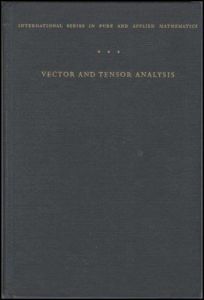This text can be used in a variety of ways. The student totally unfamiliar with vector analysis can peruse Chapters 1, 2, and 4 to gain familiarity with the algebra and calculus of vectors. These chapters cover the ordinary one-semester course in vector analysis. Numerous examples in the fields of differential geometry, electricity, mechanics, hydrodynamics, and elasticity can be found in Chapters 3, 5, 6, and 7, respectively. Those already acquainted with vector analysis who feel that they would like to become better acquainted with the applications of vectors can read the above-mentioned chapters with little difficulty: only a most rudimentary knowledge of these fields is necessary in order that the reader be capable of following their contents, which are fairly complete from an elementary viewpoint. A knowledge of these chapters should enable the reader to further digest the more comprehensive treatises dealing with these subjects, some of which are listed in the reference section. It is hoped that these chapters will give the mathematician a brief introduction to elementary theoretical physics. Finally, the author feels that Chapters 8 and 9 deal sufficiently with tensor analysis and Riemannian geometry to enable the reader to study the theory of relativity with a minimum of effort as far as the mathematics involved is concerned.
Our starting point for the definition of a vector will be the intuitive one encountered in elementary physics. Any directed line segment will be called a vector. The length of the vector will be denoted by the word magnitude. Any physical element that has magnitude and direction, and hence can be represented by a vector, will also be designated as a vector.
In Collection
#7433
Read It:
Yes
#7433
Read It:
Yes
|
|
||||||||
